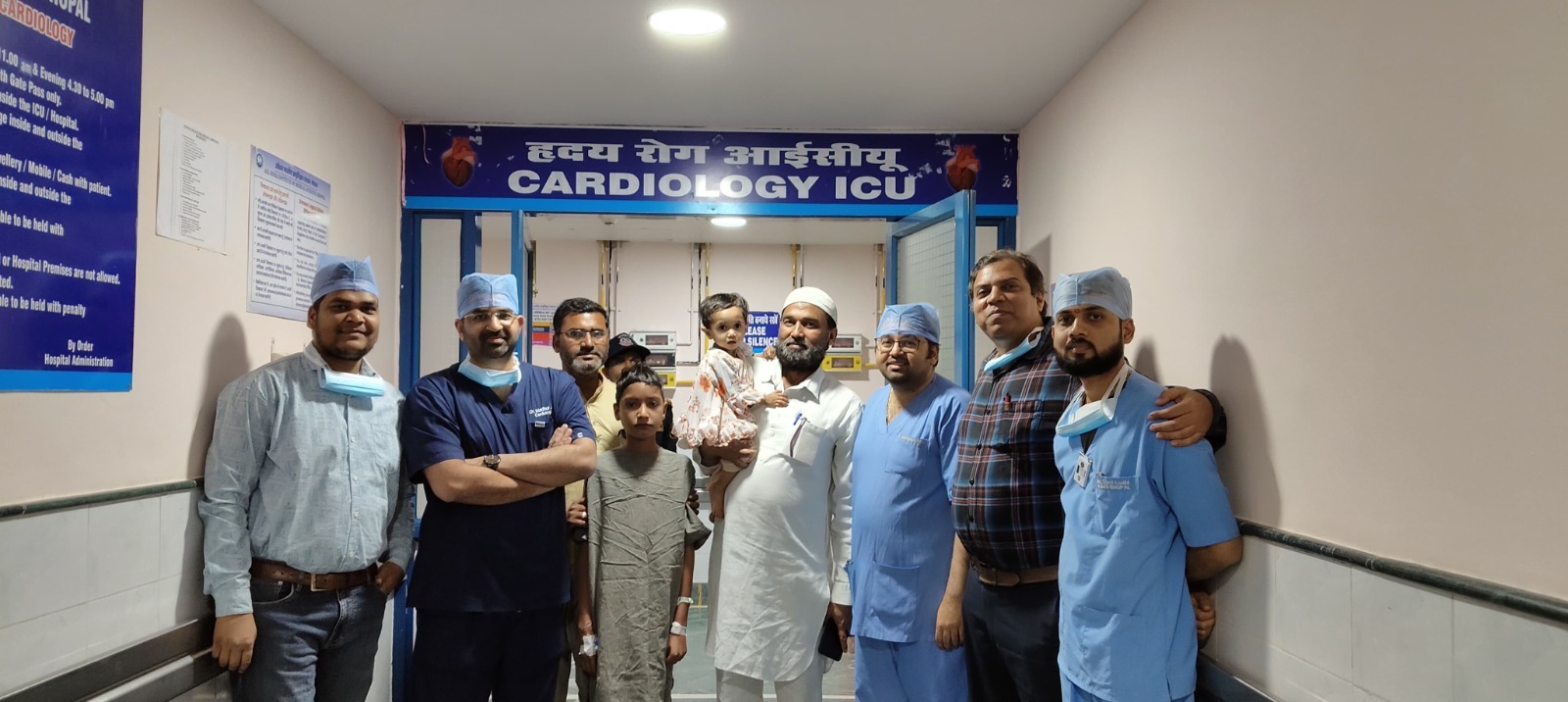CNN Central News & Network–ITDC India Epress/ITDC News Bhopal: Under the guidance of Professor Ajay Singh, Director of AIIMS Bhopal, for the first time, rare and complex congenital heart disease in children has been treated without surgery using Nitinol device. In the first case, a 1-year-old girl with a weight of only 6 kilograms faced difficulty in breathing, could not drink milk, and had chest retractions with weight loss.
Diagnosis revealed a rare congenital heart defect called Aortopulmonary window (0.1 to 0.6% of CHD). The device was used to close the hole in the heart by reaching it through a vein from the back. In the second case, a 3-year-old boy weighing 12 kilograms was diagnosed with a large Ostium Secundum Atrial Septal Defect (ASD) of 25 mm size, which was sent from another hospital for surgical closure. However,
here, the cardiology team decided to treat it without surgery after examination and found it suitable for Percutaneous Transcatheter device closure. The child was successfully managed with a Nitinol device of 28 mm size, avoiding the need for surgery. In the third case, a 12-year-old boy with difficulty breathing and oxygen saturation of only 60-65% on the pulse oximeter. Examination revealed AV malformation (an abnormal connection between arteries and veins) affecting the lungs.
It was closed percutaneously using a vascular plug device without incisions. After the procedure, oxygen levels normalized up to 95%. These complex pediatric cases were successfully managed by the cardiology team of AIIMS Bhopal led by Dr. Bhushan Shah along with Dr. Ambar Kumar, Dr. Kishlay Shrivastava, and Dr. Madhur Jain,
with the assistance of the cardiac anesthesia team led by Dr. Vaishali Wendeskar and Dr. S. R. A. N. Bhushanam Padala, managed by the CVTS team led by Dr. Yogesh Niwariya and Dr. M. Kisan. This is the first time that AIIMS Bhopal has successfully treated such complex cases in pediatric patients. Director Professor Ajay Singh congratulated the entire team for facing new challenges and providing optimal patient care.

